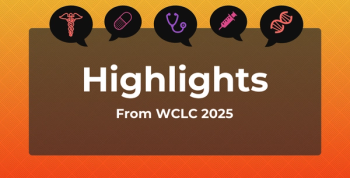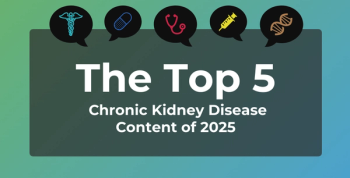
CML Treatment Costs Continue to Rise Despite Availability of Generic Imatinib
Newly published data suggests most patients are opting for second- or third-generation tyrosine kinase inhibitors instead of a generic form of imatinib.
Patients with
Those are the findings of a new article
Imatinib (Gleevec) has been a landmark medication for patients with CML, Lyman and Henk note, bringing life expectancy for these patients in line with that of the general population, though at a significant financial cost. A generic form of the drug was first approved in 2016, but the generic must compete with second- and third-generation TKIs, including dasatinib (Sprycel), nilotinib (Tasigna), bosutinib (Bosulif), and ponatinib (Iclusig), drugs that come at a significantly higher cost than the generic.
Though the drugs represent newer innovations, Lyman and Henk said there is no evidence that they improve progression-free survival or overall survival.
In an attempt to see how treatment patterns have lined up with the availability of newer, high-cost options, the authors consulted OptumLabs’ Data Warehouse claims database, extracting de-identified cases of patients with CML who were enrolled at least 6 months prior to CML diagnosis and who did not undergo stem-cell transplantation prior to starting on a TKI. The authors tracked TKI use and health care costs to spot trends between the years 2010 and 2019.
Over the decade, the authors noted a significant jump in the use of second- and third-generation TKIs as a first-line medication. In 2010, just 19% of patients took a next-generation TKI, but by 2019 that proportion had jumped to 56%. The authors found 1 in 4 patients switched TKIs in their first year of treatment, and by the end of the first year, 64% of patients in 2018 were using second- or third-generation TKIs, compared to just 34% in 2010.
Over that same period, the cost of TKIs—the largest contributors to health care expenditures in CML—jumped from $243 per day in 2010 to $354 in 2018.
Meanwhile, generic imatinib could be obtained for a daily cost as low as $20 for a 400-mg tablet in 2018, the authors said.
Lyman and Henk said the trend toward high-cost drugs not only has an impact on overall health care costs, but also can affect patients’ experiences.
“High costs may result in treatment delays, poor compliance, or early termination of effective therapy, leading to poorer outcomes for individuals with a treatable and potentially curable malignancy,” they said.
It’s unclear whether the issue of high costs will change anytime soon. Lyman and Henk note that the patent on dasatinib is set to expire in 2025, but they noted that other next-generation TKIs will remain on patent beyond 2030. Thus, the availability of another generic alone might not be sufficient to curb the upward trend of drug prices and consequently CML treatment costs.
Lyman and Henk also said delays in pharmacies passing on savings from lower acquisition prices might slow the effects of any decrease in average treatment costs.
“Policies that address rising cancer drug prices and overall health care expenditures must be of the highest priority for clinicians, payers, patient advocates, and policy makers moving forward,” they concluded.
Reference
Lyman GH, Henk HJ. Association of generic imatinib availability and pricing with trends in tyrosine kinase inhibitor use in patients with chronic myelogenous leukemia. JAMA Oncol. Published online October 01, 2020. doi:10.1001/jamaoncol.2020.4660
Newsletter
Stay ahead of policy, cost, and value—subscribe to AJMC for expert insights at the intersection of clinical care and health economics.









































